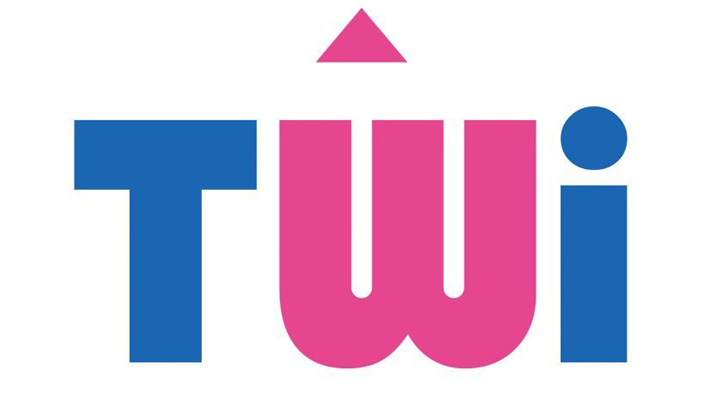A content migration involves multiple moving parts, and navigating the entire process from start to finish can seem overwhelming. However, with a well-defined content migration strategy and a clear understanding of the necessary steps, you can effectively manage the complexities of your content migration and ensure the best possible outcome.
A successful content migration brings numerous benefits to businesses, such as:
- Streamlined and centralized content for easier management and retrieval
- Enhanced collaboration and efficiency
- Scalability and adaptability to evolving market needs
- Improved customer experience
- Accessible, standardised, and consistent content for better visibility and effectiveness
At TWi, we know that a comprehensive content migration strategy helps businesses unlock these benefits. A well-executed migration plan prevents disruption (e.g., downtime, delays, decreased productivity), mitigates data loss, and controls migration costs. It also ensures that the migration is efficient, strategic, and aligned with business goals.
It’s important to understand that content migration strategy is part of an organisation’s wider content strategy. An organisation’s content strategy focuses on managing and leveraging its content to achieve specific business goals and address target audience needs. A content migration strategy focuses on the plan and steps involved in moving content from one system(s) to another.
We’ve developed a tried and trusted content migration framework that has four phases:
- Discovery
- Planning
- Execution
- Fine-tuning

In this article, we will take you through the four phases of this content migration framework with a particular emphasis on the planning phase and developing a content migration strategy. Our step-by-step approach will help you navigate your content migration journey with confidence.
Phase 1: Discovery
Discovery is the first (and crucial) phase of any content migration. In this phase, we uncover our client’s needs so we can tailor our migration approach specifically for them.
There are a variety of tasks that you should complete during this discovery phase.
Here are a few examples:
- Establish your organisation’s business case for content migration.
- Factor in the end-user’s experience and how the content migration will affect them.
- Conduct a competitor analysis.
- Discover the current workflows and content governance.
- Produce a change management plan.
- Review the organisation’s content style guidelines.
- Allocate project resources.
- Establish checkpoints and milestones (for monitoring and tracking your migration).
Tip: Avoid unnecessary headaches and complications later in your project by allocating adequate time and effort to proper change management and resource planning. These activities are often overlooked early in a content migration project and are crucial for smooth content migration.
Once you have gone through a thorough discovery phase, you’ll have a deep understanding of your organisation’s content needs, business goals, and end-user requirements, then you can start to build your migration strategy.
Although this article is mainly concerned with the planning phase of our framework, it’s important to know that this should always be preceded by a thorough content discovery phase.
Phase 2: Planning
It’s worth spending time on this key phase of the process, as it includes multiple tasks, which will feed into your overall migration strategy.
Note: While the focus of this article is on migration strategy, it’s important to point out this is just one aspect of the planning phase. There are other things that you need to consider during this phase, such as, your user adoption and training plan which will not be discussed here.
1. Set clear content migration goals and KPIs
Whether you’re consolidating content from multiple systems, migrating to a new content management system (CMS) or component content management system (CCMS), or moving from unstructured to structured content, clearly defined goals will provide a roadmap for your migration project. These goals are also essential to manage and align shareholder expectations (we prefer the term ‘shareholder’ to ‘stakeholder’ because it more accurately reflects the inclusive and collaborative approach we take with our clients).
Setting project and content-specific KPIs will ensure you can monitor the progress and impact of your content migration, identify areas for improvement, and make data-driven decisions throughout the process. It also helps to measure the success of the migration post-implementation.
Tip: Our content migration team work with clients to ensure that these KPIs are SMART (Specific, Measurable, Achievable, Relevant, and Time-based). Your KPIs should follow these criteria too.
2. Choose the right migration approach
When deciding on the best approach for your business you should think about the following factors:
- The project scope: Will it be a full or partial migration?
- Approach: Will the approach be a lift and shift of the existing content, or reuse and/or reauthor?
- Migration methods: Will the migration be manual, semi-automated, or a combination?
- Timing and sequencing: Do they align with business operations?
- Technical requirements / limitations: What are the capabilities of the new system (e.g., file formats and integrations)?
- Translation: How will the content migration impact translation management?
3. Define the content supply chain
Define the end-to-end process of content creation, information management, translation management, distribution, and content removal/archival, encompassing shareholders, and systems that will be in place post-migration.
4. Establish a content governance model
A robust governance model provides a framework for effective decision-making, content ownership, and accountability throughout the migration process and beyond. A governance model should include clear role definitions and responsibilities, a streamlined workflow and approval process, content standards and guidelines, and regulatory compliance.
5. Analyse the existing content
Before a content migration, it is crucial to thoroughly analyse the existing content before developing your migration strategy.
Complete a content inventory
Conduct a thorough inventory of all the content that is to be migrated and meticulously identify all content elements such as document types, source formats, and required outputs. Be sure to include any translation requirements.
Carry out a content audit
Complete a thorough examination and evaluation of the existing content to assess its quality, formatting, category, information type, audience, and effectiveness.
Questions you should ask during your content audit include:
- Which content will be migrated?
- Is there content that needs to be archived and not migrated?
- Are there information gaps that require new content?
6. Define the information architecture
Information Architecture (IA) is the process of organising, structuring, and labelling content to make it easy to find, use, and understand. Defining your IA early in your migration project will help streamline the migration process.
The most common assets included in an IA are:
- Content models
- Taxonomy design
- File structure/naming conventions
- Metadata requirements
- Navigation structure
- Content Reuse strategy and targets
Tip: Once you’ve developed your IA, create a QA checklist that can be used to QA your migrated content.
7. Specify the migration workflow
Outline the step-by-step process for transferring content from the current system to the new CMS or CCMS). The strategy should include a detailed end-to-end content supply chain for the migration process itself (including information like, where you will export your data from), and it should address factors such as content mapping, metadata transfer, and version control. It should also consider content relationships and any required content transformations.
Phase 3: Implementation
This phase is where you put your meticulously crafted migration strategy and plan into action. As you move forward with the actual migration, there are several important tasks to consider such as:
- Backing up content: This ensures that in case of any unexpected data loss during the migration process, the original content and data can be restored.
- Cleaning up content: Remove any redundant information and standardise content formats and styles to ensure consistency and ensure publishing.
- Executing a pilot project: We recommend running a pilot project (where possible) to test the content migration process on a smaller scale before implementing it across the entire content repository.
- Leveraging semi-automation and migration tools: Consider using semi-automation and migration tools to automate repetitive tasks and check data integrity.
- Transferring content to the new environment: Migrate the content assets, metadata, and multimedia files to the target environment.
- Testing and quality assurance: Confirm the accuracy and completeness of the migrated content, including content rendering, metadata, and links.
Tip: In our experience, the most underestimated step during a migration is content clean up. Regardless of whether your migration is semi-automated or manual the inequality from source to future state always requires a meticulous cleanup.
Phase 4: Fine-Tuning & Maintenance
Once your content migration plan has been executed, it paves the way for the fourth and final fine-tuning and maintenance phase. In this final stage, you should focus on several key activities to ensure a successful transition. Let’s explore some of them:
- User acceptance testing (UAT): Select users to interact with the new system, perform various tasks, and provide feedback on their experience. This will identify any usability or workflow issues, areas for improvement, or additional training needs.
- Content KPI monitoring: Track any relevant content metrics (agreed at the beginning of the project). This will help you to objectively assess the effectiveness and performance of your content migration.
- Identifying and resolving post-migration issues: During the initial post-migration period, closely monitor the system, user feedback, and support requests to identify and address any post-migration issues that may arise.
Conclusion
The key takeaway from this phase-by-phase guide is the importance of meticulous planning and execution. A clear and detailed migration strategy will ensure a smooth and successful content migration that minimizes disruptions, data loss, and controls costs.
We know that a solid migration strategy is the foundation of a well-structured and sustainable content migration that optimises content organisation, enhances user experience, and facilitates efficient collaboration. So, we use our framework of discovery, planning, implementation, and maintenance to help our clients navigate the content migration process with confidence and maximise the value and impact of their content for years to come.










